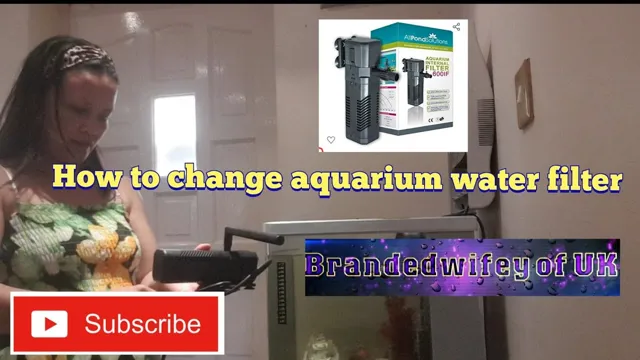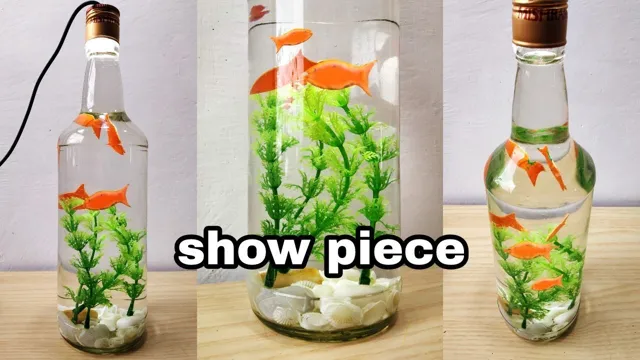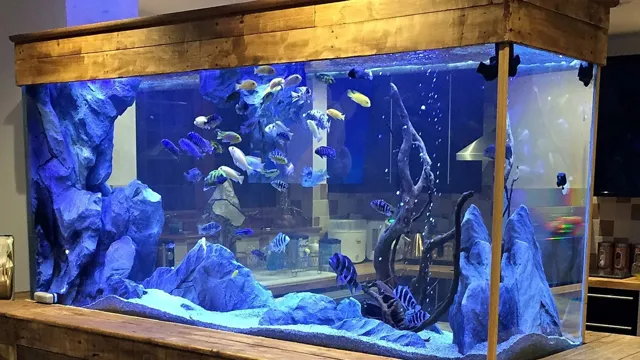How to Get Aquarium Plant Out of Plastic Pot: Tips and Tricks for Easy Removal
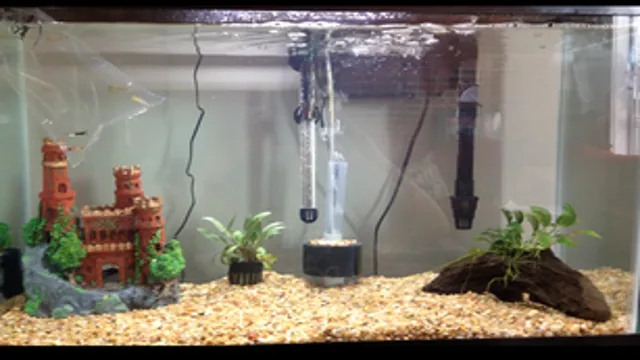
Are you having trouble removing aquarium plants from plastic pots without damaging them? Don’t worry; we’ve got you covered. It’s essential to handle them carefully to avoid damaging the delicate roots and leaves. Plastic pots provide appropriate support and stability to your aquatic plants, but it can be tricky to remove them without destroying the entire arrangement.
In this blog, we’ll show you some tips and tricks to remove aquarium plants from plastic pots without causing any harm. So, let’s dive in!
Materials Needed
To successfully transfer your aquarium plant out of a plastic pot, you will need a few materials on hand. Firstly, you will need a clean pair of pruning shears or scissors to trim any overgrown roots or damaged leaves. Next, you will require a new pot that is made of clay or ceramic and is larger than the current plastic container.
Additionally, you will need a high-quality potting mix that is rich in nutrients and specifically designed for aquatic plants. Finally, a bucket of clean, fresh water is crucial for rinsing the roots of the plant before repotting. With these materials on hand, you can safely and effectively move your aquarium plant to a new and improved home.
Remember to handle the plant with care and to keep its environment well-maintained to ensure its continued growth and health.
Gloves, Scissors, Bucket, Aquarium Water
When it comes to setting up an aquarium, having the right materials is crucial for success. If you’re ready to get started, you’ll need gloves, scissors, a bucket, and aquarium water. First up, gloves are important for protecting your hands from any sharp edges or potential hazards while working with the aquarium.
Next, scissors come in handy for cutting any materials needed for decoration, or trimming back any plants that may get too long. A bucket is essential for carrying water and for removing and replacing water during water changes. Finally, aquarium water is the most important material for setting up your tank.
It’s important to use treated water, dechlorinated and at the correct temperature, to ensure the health and safety of your aquatic pets. Remember to use all materials correctly and follow instructions to ensure the best start for your aquarium. Happy fish keeping!
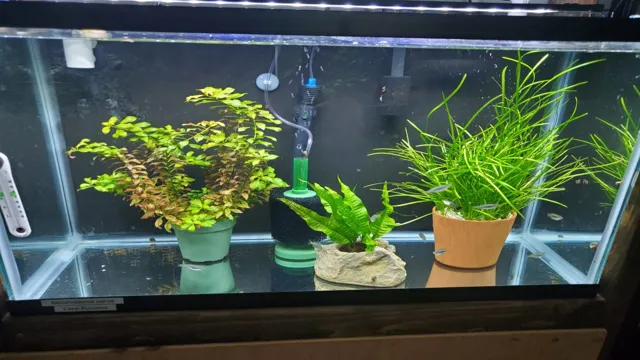
Preparation
If you’ve just got a new aquarium plant and it’s still in a plastic pot, you may be wondering how to get it out without damaging the delicate roots. The first step is preparation. Start by thoroughly washing your hands and sterilizing any tools you plan on using, such as scissors or tweezers, to avoid introducing bacteria or other harmful substances to your plant.
Next, prepare a clean surface to work on. Lay out a towel or paper towels to prevent damage and make it easier to see what you’re doing. Finally, before you begin, look up any specific instructions for your plant species to ensure you’re handling the roots appropriately.
With these steps, you’ll have a better chance of successfully and safely transplanting your new aquarium plant.
Remove the plastic pot from the aquarium, make sure gloves are worn
When it comes to preparing your aquarium for a new addition, taking certain steps is crucial to ensure the safety and well-being of your aquatic pets. The first step is to remove the plastic pot from the aquarium, but it’s important to do so while wearing gloves to prevent any chemicals from your hands to contaminate the water. Removing the plastic pot also provides more space for your new addition to swim around and explore.
This is especially important if you’re adding a larger fish, as they require ample space to move around. After removing the pot, make sure to give the area a thorough clean to remove any debris or waste. This will create a healthy environment for your pets to thrive in.
With these simple steps, you can ensure that your aquarium is ready for its new inhabitant.
Step-by-Step Guide
If you’ve recently purchased an aquarium plant in a plastic pot and are looking to transfer it to your tank, you may be wondering how to get it out of its current container. The first step is to gently remove any rocks or substrate that may be covering the plant’s pot. Then, using a pair of scissors or a knife, carefully cut away any exposed plastic around the edges of the pot.
Be sure to avoid cutting into the roots or damaging the plant in any way. Once the plastic is removed, gently loosen the soil around the roots with your fingers or a small tool, being careful not to break or damage them. Finally, carefully remove the plant from its pot and transfer it to your aquarium.
It’s important to handle the plant gently during this process to avoid any stress or damage, which could harm its growth and overall health. By following these steps, you can safely and effectively transfer your aquarium plant from its plastic pot into your aquarium’s substrate.
1. Trim the bottom of the plant, carefully separate roots from soil
If you’re planning to re-pot a plant, it’s essential to know how to do it properly to prevent any root damage or shock to the plant. One of the first steps is to trim the bottom of the plant to ensure proper growth in the new soil. To do so, carefully separate the roots from the soil.
You can use your fingers or a gardening tool to gently loosen the soil around the roots. Be cautious so as not to damage the roots or break them apart. Once you’ve separated the roots, trim any dead or brown roots using a pair of sharp scissors.
This will promote the growth of new healthy roots while ensuring the plant receives the right nutrients from the new soil. Don’t be afraid to take your time during this step. Rushing it might do more harm than good, and the last thing you want is to stress out your precious plant.
By properly trimming the bottom of your plant, you’ll help guarantee its long-term health and growth in its new home.
2. Place the plant in a bucket with aquarium water
When it comes to taking care of aquarium plants, it’s important to understand that they require a specific environment to thrive. One important step in the process is placing the plant in a bucket with aquarium water. But how do you do it properly? First, fill a clean bucket with aquarium water, making sure to leave enough space for the plant to fit in.
Then, carefully remove the plant from its original container and rinse off any excess soil or debris. Gently place the plant in the bucket, ensuring that the roots are fully submerged. It’s important to note that some plants may require specific water conditions, so be sure to research this beforehand.
By following these steps, your aquarium plants will be able to flourish in a healthy environment. Remember, proper care is key to maintaining a beautiful aquarium!
3. Gently separate and remove any remaining soil
Now that you’ve washed away most of the dirt from your plant, it’s time to move on to the next step: gently separating and removing any remaining soil. This can help prevent waterlogging and keep the plant healthy. Start by carefully loosening up the soil around the roots with your hands or a small brush, being careful not to damage the roots.
Then, gently shake the plant to remove any loose soil. You can also use a watering can or spray bottle to help wash away any stubborn clumps of dirt. If the plant is particularly difficult to clean, you might need to use a sterilized pair of scissors to trim away any excess soil.
Once all the soil is removed, allow the plant to air dry before repotting in fresh soil. With this step out of the way, your plant will be ready to grow strong and healthy!
4. Rinse the roots thoroughly under running water before placing it in the aquarium
When it comes to setting up an aquarium, one of the most important components is the plants. And if you want natural-looking plants in your aquarium, then you definitely need to consider using live roots instead of artificial ones. Live aquatic plants have a lot of benefits for your aquarium and the fish in it, and they can also help with oxygenation and reducing algae growth.
However, before you can add the roots to the aquarium, you need to make sure they are clean and free of any debris or contaminants. That’s why rinsing the roots thoroughly under running water is an essential step in the process. This will help to remove any dirt, dust, or other particles that may be on the roots.
You don’t want to introduce any unwanted substances into your aquarium, as this could harm the fish and other aquatic life. Once you’ve rinsed the roots, you can then place them carefully into the substrate of your aquarium, taking care not to damage the delicate roots. With a bit of effort and care, you can create a beautiful and healthy aquarium with live aquatic plants.
Final Thoughts
If you’ve invested in an aquarium plant that’s been potted in plastic, you’re going to want to repot it without damaging the delicate roots. To get an aquarium plant out of a plastic pot, it’s essential to approach the task with patience and care. You can begin by tipping the pot on its side and gently squeezing the sides to loosen the soil.
Next, remove the plant and examine the roots for any signs of damage or disease. If the roots look healthy, you can place the plant in a new container with fresh substrate. Finally, ensure the plant is well-watered and receives the appropriate amount of light and nutrients to ensure its continued growth and vibrancy.
With a little care and attention, your aquarium plant will thrive for years to come.
Don’t worry if some leaves fall off-the plant should recover quickly in its new home
If you’re moving house plants to a new location, it’s natural to be worried about how they’ll fare during the process. One common concern is whether the plant will lose some of its leaves and if this is a bad sign. However, it’s important to remember that a plant shedding a few leaves is not unusual, particularly during a move.
In fact, losing some leaves can be the plant’s way of adapting to its new environment. Additionally, plants are resilient and can regenerate leaves quickly. So, don’t panic if you notice a few leaves falling off during the transition.
With a little time and care, your house plant should bounce back and thrive in its new home. Just be sure to provide the right amount of light, water, and nutrients for the specific type of plant you have. Remember, change can be good for plants just as it is for humans.
Conclusion
Getting an aquarium plant out of a plastic pot may seem like a daunting task, but fear not! With these simple steps, you’ll have your plant safely removed and ready to add some green to your aquatic environment. And who knows, maybe with your newfound plant prowess, you’ll even consider branching out to adding some fish friends to your tank (just be sure to do your research first). Happy planting and swimming!”
FAQs
What is the best way to remove an aquarium plant from a plastic pot?
The best way to remove an aquarium plant from a plastic pot is to gently wiggle and pull the plant while holding onto the base of the plastic pot. If the plant is still stuck, try running the pot under warm water to loosen any debris or roots that may be holding it in place.
Can I reuse the plastic pot for another aquarium plant?
Yes, you can definitely reuse the plastic pot for another aquarium plant. Make sure to clean it thoroughly with warm water and a mild detergent to remove any debris, algae, or bacteria that may be left behind.
Is it necessary to remove the plastic pot before planting the aquarium plant?
It depends on the type of plant and your personal preference. Some aquarium plants can be planted directly into the substrate without the need for a plastic pot, while others may benefit from the added stability and nutrient-rich environment that a pot can provide.
What are the benefits of using a plastic pot for aquarium plants?
Using a plastic pot for aquarium plants can provide added stability, prevent the substrate from being disturbed by the roots, and create a nutrient-rich environment for the plant to grow. Additionally, plastic pots can be easily moved or rearranged without disrupting the other plants in the aquarium.
How often should I replant my aquarium plants into new pots?
It is not necessary to replant aquarium plants into new pots unless the pot becomes damaged or contaminated with harmful bacteria or algae. However, if you choose to replant, it is recommended to do so every 6 to 12 months to allow the plant to grow and spread its roots.
Can I use a different type of pot for my aquarium plants?
Yes, you can use a different type of pot for your aquarium plants as long as it is safe for aquarium use and does not release any harmful chemicals into the water. It is recommended to use pots made from materials such as plastic, ceramic, or glass.
Do I need to fertilize my aquarium plants if they are in plastic pots?
Yes, you should continue to fertilize your aquarium plants even if they are in plastic pots. The nutrients from the fertilizer will feed the plant’s roots and help it grow and flourish. It is recommended to use a liquid or substrate fertilizer specifically designed for aquarium plants.




